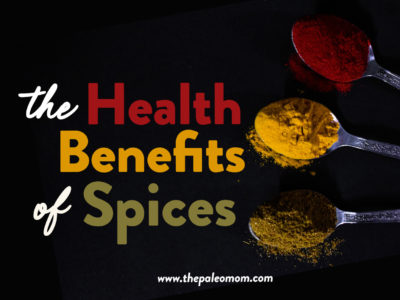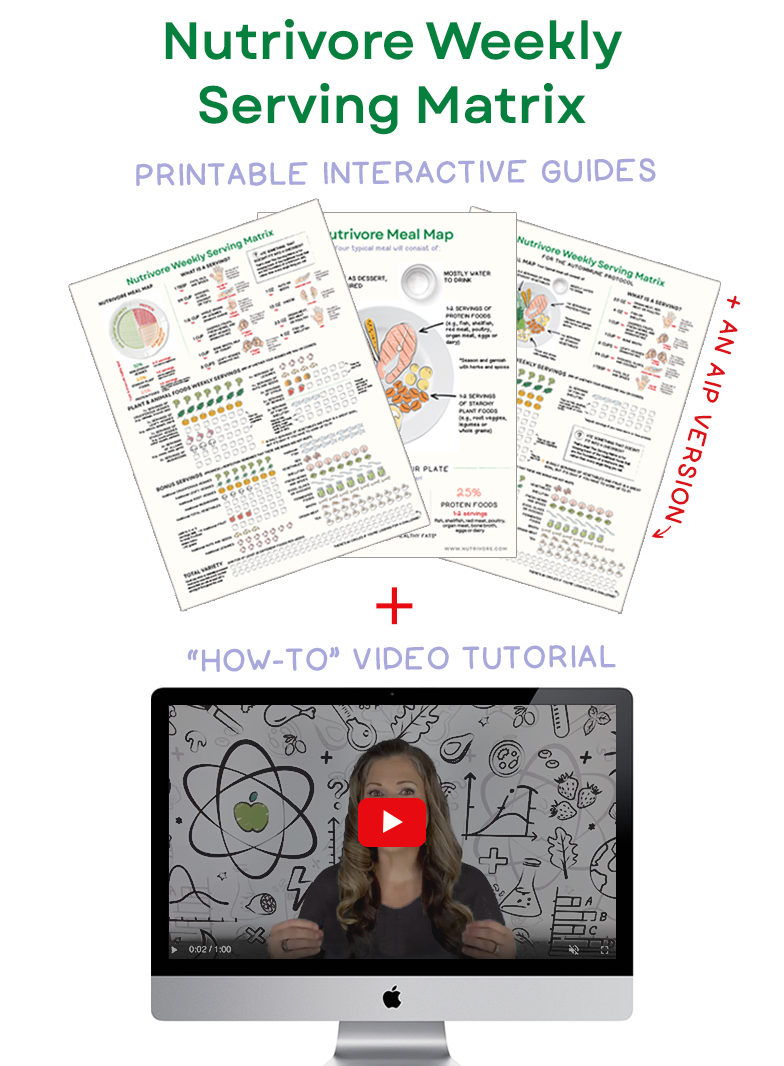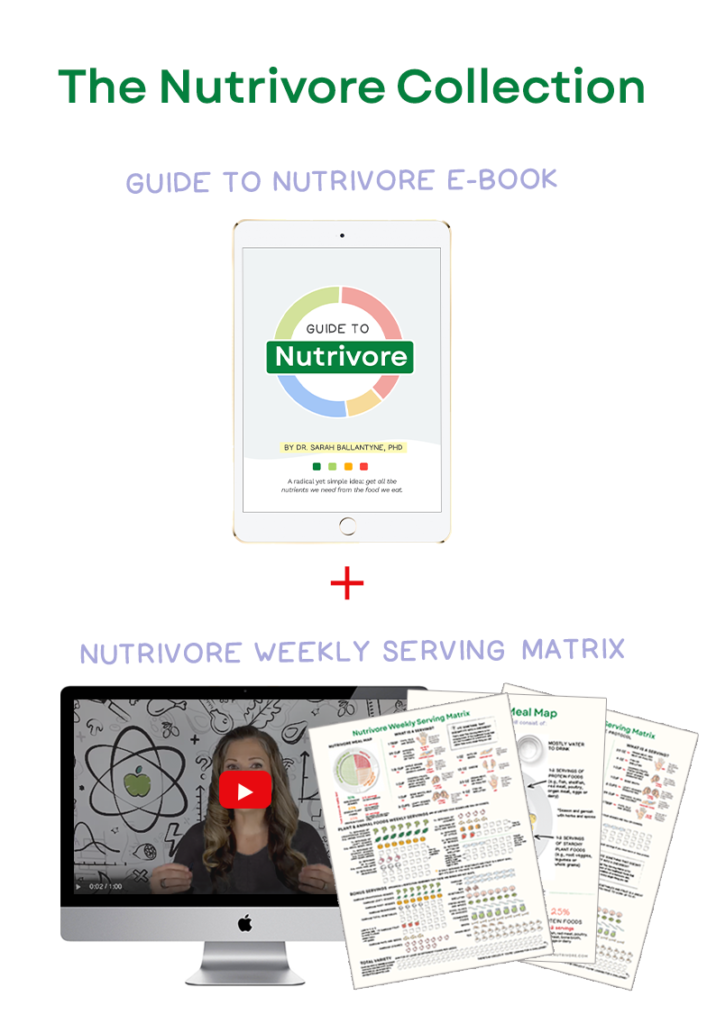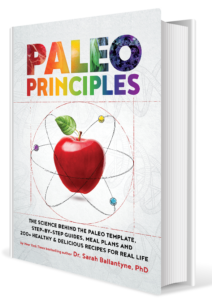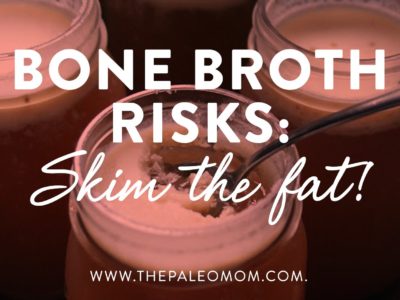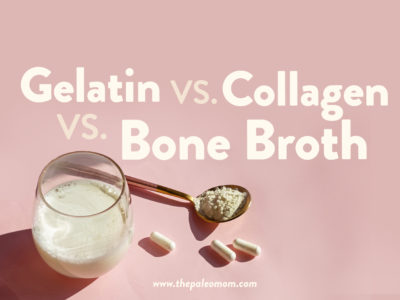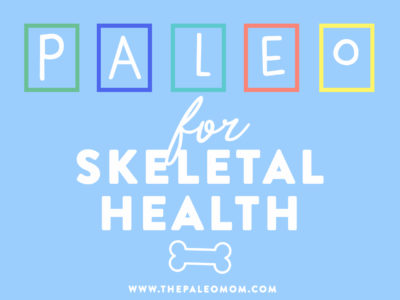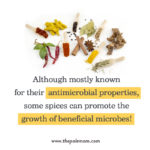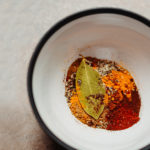Spices are used to flavor or color foods and come from the seeds, roots, buds, bark, resin, or fruits of a plant. They’re usually used in their dried form—with a few notable exceptions like ginger and chili peppers! (Herbs, while also used to flavor food, are defined as coming from plant leaves, flowers, or stems, and are more often consumed fresh. See The Health Benefits of Herbs.) Some of the most common spices include:
- Allspice
- Anise
- Caraway
- Cardamom
- Celery seed
- Cinnamon
- Cloves
- Coriander seed
- Cumin
- Dill seeds
- Fennel
- Galangal
- Ginger
- Horseradish
- Mustard
- Nutmeg
- Paprika
- Pepper (many varieties!)
- Saffron
- Turmeric
- Vanilla
- Wasabi
Along with their role in modern cuisine, spices were one of the most important commodities throughout history! In fact, the quest for spices (which only grew natively in certain areas) helped shape human civilizations by driving trade and exploration around the globe.
 As far back as 2000 BCE, spice trade developed throughout the Middle East (most notably with spices like black pepper and cinnamon). And in 130 BCE, when the Han Dynasty in China officially opened trade with the West, the famous Silk Road formed as a network of trade routes linking Asia with Northern Africa and Europe, where spices (among many other things!) were brought from the East via camel caravans and exchanged for goods such as animals, honey, fruits, textiles, glassware, and precious metals. In order to drive up prices and deter competitors, Arabic spice merchants crafted fantastical tales about the origin of their spices and the grueling work it took to collect them. For example, cinnamon was said to come from the nests of a giant bird called the Cinnamologus, which spice merchants would lure to the ground with chunks of oxen and donkey. When the bird returned to its nest with the meat, the weight would be too much for the nest to hold, causing it to break and fall to the ground where the merchants were waiting to collect it! The trade occurring on the Silk Road directly contributed to the development of China, Egypt, Persia, Arabia, India, and Rome!
As far back as 2000 BCE, spice trade developed throughout the Middle East (most notably with spices like black pepper and cinnamon). And in 130 BCE, when the Han Dynasty in China officially opened trade with the West, the famous Silk Road formed as a network of trade routes linking Asia with Northern Africa and Europe, where spices (among many other things!) were brought from the East via camel caravans and exchanged for goods such as animals, honey, fruits, textiles, glassware, and precious metals. In order to drive up prices and deter competitors, Arabic spice merchants crafted fantastical tales about the origin of their spices and the grueling work it took to collect them. For example, cinnamon was said to come from the nests of a giant bird called the Cinnamologus, which spice merchants would lure to the ground with chunks of oxen and donkey. When the bird returned to its nest with the meat, the weight would be too much for the nest to hold, causing it to break and fall to the ground where the merchants were waiting to collect it! The trade occurring on the Silk Road directly contributed to the development of China, Egypt, Persia, Arabia, India, and Rome!
Individual spices have their own fascinating histories, too.
 Saffron, for example, is one of the most expensive spices in the world (it’s more expensive per gram than gold!) due to its labor-intensive growing and harvesting process. In order to produce a single pound of saffron, about 200,000 thread-like sigmas need to be hand-picked from 70,000 Crocus sativus flowers, which only bloom within a one- or two-week window each year and must be hand-picked when they blossom at dawn, since they quickly wilt throughout the day. Meanwhile, allspice was encountered during Christopher Columbus’s second voyage to the New World, where it was growing in Jamaica, and was later given the name “allspice” by the British due to its aroma evoking multiple other spices (cloves, cinnamon, pepper, and nutmeg). And many of us might not know this fun tidbit about nutmeg: in 1667, the Netherlands wanted possession of a very small (barely a square mile of land!) Indonesian island owned by the British, due to the abundance of nutmeg growing there. In order to get it, they traded the island of Manhattan! Mustard seed has traced all the way back to Stone Age settlements, and Sumerians of Mesopotamia made an early form of mustard by mixing ground mustard seeds into a paste and mixing it with unripe grape juice. And wasabi, while now nearly synonymous with eating sushi, wasn’t actually used in paste form until 1971.
Saffron, for example, is one of the most expensive spices in the world (it’s more expensive per gram than gold!) due to its labor-intensive growing and harvesting process. In order to produce a single pound of saffron, about 200,000 thread-like sigmas need to be hand-picked from 70,000 Crocus sativus flowers, which only bloom within a one- or two-week window each year and must be hand-picked when they blossom at dawn, since they quickly wilt throughout the day. Meanwhile, allspice was encountered during Christopher Columbus’s second voyage to the New World, where it was growing in Jamaica, and was later given the name “allspice” by the British due to its aroma evoking multiple other spices (cloves, cinnamon, pepper, and nutmeg). And many of us might not know this fun tidbit about nutmeg: in 1667, the Netherlands wanted possession of a very small (barely a square mile of land!) Indonesian island owned by the British, due to the abundance of nutmeg growing there. In order to get it, they traded the island of Manhattan! Mustard seed has traced all the way back to Stone Age settlements, and Sumerians of Mesopotamia made an early form of mustard by mixing ground mustard seeds into a paste and mixing it with unripe grape juice. And wasabi, while now nearly synonymous with eating sushi, wasn’t actually used in paste form until 1971.
Nutrients in Spices
As with herbs, spices are consumed in too small of quantities to contribute much in the way of calories, carbohydrates, fiber, fat, or protein to our diets, though they can help boost our micronutrient intake!
For example, here’s the vitamin and mineral highlights of the most common spices:
- A tablespoon of allspice contains 9% of the DV for manganese and 4% of the DV for vitamin C and calcium.
- A tablespoon of anise seed contains 13% of the DV for iron and 7% of the DV for manganese.
- A tablespoon of caraway seeds contains 6% of the DV for iron and 4% of the DV for calcium, magnesium, and manganese.
- A tablespoon of ground cardamom contains 80% of the DV for manganese and 4% of the DV for iron. 1`
- A tablespoon of celery seed contains 25% of the DV for manganese, 16% of the DV for iron, and 11% of the DV for calcium, along with some magnesium and copper.
- A tablespoon of ground cinnamon offers a whopping 68% of the DV for manganese, 8% of the DV for calcium, and 4% of the DV for iron.
- A tablespoon of ground cloves contains nearly all the manganese you need for a day, along with 12% of the DV for vitamin K, 9% of the DV for vitamin C, and some calcium, magnesium, and iron.
- A tablespoon of coriander seed contains 5% of the DV for iron and manganese and 4% of the DV for calcium and magnesium.
- A tablespoon of cumin seeds provides 22% of the DV for iron, 10% of the DV for manganese, and some magnesium, and calcium.
- A tablespoon of nutmeg contains 10% of the DV for manganese and some copper and magnesium.
- A tablespoon of dill seed contains 10% of the DV for calcium and 6% of the DV for manganese and iron.
- A tablespoon of fennel seeds contains 19% of the DV for manganese, 7% of the DV for calcium, and 6% of the DV for iron and magnesium.
- A tablespoon of ground ginger contains 70% of the DV for manganese, 5% of the DV for vitamin E, and smaller amounts of vitamin B6, selenium, iron, potassium, magnesium, and zinc.
- A tablespoon of horseradish contains 6% of the DV for vitamin C.
- A tablespoon of mustard seed contains 21% of the DV for selenium, 10% of the DV for manganese, and notable levels of magnesium, calcium, iron, thiamin, niacin, and zinc.
- A tablespoon of nutmeg contains 10% of the DV for manganese and 4% of the DV for copper.
- A tablespoon of paprika contains 71% of the DV for vitamin A, 14% of the DV for vitamin B6, 10% of the DV for vitamin E, 9% of the DV for iron, and 8% of the DV for vitamin C.
- A tablespoon of black pepper contains 18% of the DV for manganese, 13% of the DV for vitamin K, and 10% of the DV for iron.
- A tablespoon of cayenne pepper contains 44% of the DV for vitamin A, 8% of the DV for vitamin E, and some vitamin C, vitamin B6, vitamin K, and manganese.
- A tablespoon of saffron contains 28% of the DV for manganese.
- A tablespoon of ground turmeric contains 26% of the DV for manganese, 16% of the DV for iron, 6% of the DV for vitamin B6, and some potassium, zinc, copper, magnesium, niacin, and vitamin C.
- An ounce of raw wasabi root contains 20% of the DV for vitamin C and some calcium, magnesium, manganese, potassium, and vitamin B6.
Nutrivore Weekly Serving Matrix
An easy-to-use and flexible weekly checklist
to help you maximize nutrient-density.
The Weekly Serving Matrix is very helpful! I’ve been eating along these lines but this really helps me know where to focus vs. which foods serve a more secondary role. It’s super helpful and has taken a lot of worry out of my meal planning. Thanks!
Jan
So, in general, we can expect most spices (even in relatively small amounts) to help boost our micronutrient intake, especially with minerals like manganese, magnesium, iron, and copper. But, where spices really shine is in their phytonutrient content! See The Amazing World of Plant Phytochemicals! and Polyphenols: Magic Bullet or Health Hype?
Each spice has its own unique phytonutrient profile: for example, paprika is rich in canthaxanthin (which gives it its reddish-orange color), chili pepper is rich in capsaicin, dill seed is rich in quercetin, cloves are rich in oleanolic acid, cinnamon is rich in cinnamic acid, turmeric is rich in curcumin, and horseradish, mustard, and wasabi are rich in allyl isothiocyanate! Not surprisingly, being packed with phytonutrients translates to some impressive health benefits where spices are concerned, with most varieties having anti-inflammatory, antioxidant, and anti-cancer activity.
The Many Health Benefits of Spices
As with all plant foods, each spice is special in its own right and has specific benefits unique to its type! Let’s look at the health benefits delivered by the most commonly-used spices!
 Allspice
Allspice
Allspice, too, has a long role in folk medicine, and experiments have confirmed its many health properties! Made from dried unripe berries from the Pimento dioica plant, allspice (and its compounds eugenol and gallic acid) have anti-cancer properties against prostate cancer and breast cancer cells, can help lower blood pressure, and may relieve some menopausal symptoms (allspice extract has been shown to enhance estradiol-stimulated pS2 mRNA expression while reducing progesterone and PTGES mRNA expression).
 Anise
Anise
Anise and Chinese star anise have been important components of Traditional Chinese Medicine, and a variety of studies have confirmed these herbs (and in particular their phytonutrients anethole, estragole, eugenol, methyl chavicol, anisaldehyde, and pseudoisoeugenol!) have a whole host of benefits for our health: a potential role for lowering blood sugar, normalizing blood lipids, regulating estrogen, acting as bronchodilators and expectorants, protecting against liver damage, serving as antispasmodics, combatting constipation, reducing nausea, and reducing menopausal symptoms.
 Cardamom
Cardamom
Cardamom has also been studied for its health effects, with evidence demonstrating its ability to lower blood pressure, protect against cancer (for example, by enhancing the cytotoxic activity of natural killer cells), protect against diabetes (by assisting in blood sugar control), promote oral health, fight inflammation, and even help heal ulcers!
Cinnamon
 Cinnamon, for example, has been widely studied for its health effects, with use in folk medicine dating back millennia (and modern science confirming its suspected benefits)! For example, randomized controlled trials have shown that cinnamon (at intakes of 999 to 1500 mg daily, for two to six months) can improve insulin sensitivity and reduce fasting blood sugar in women with PCOS. And, short-term cinnamon supplementation (1260 mg per day for three days) was effective for relieving menstrual cramps and nausea relative to placebo. In women with rheumatoid arthritis, taking 2 grams of cinnamon daily for two weeks significantly reduced arthritis symptoms and blood markers of inflammation, compared with the control group. (There’s also some evidence for a blood sugar-lowering role of cinnamon in both healthy and nondiabetic adults, but studies have been very inconsistent!) Many of the health effects of cinnamon come from its polyphenol and cinnamaldehyde content.
Cinnamon, for example, has been widely studied for its health effects, with use in folk medicine dating back millennia (and modern science confirming its suspected benefits)! For example, randomized controlled trials have shown that cinnamon (at intakes of 999 to 1500 mg daily, for two to six months) can improve insulin sensitivity and reduce fasting blood sugar in women with PCOS. And, short-term cinnamon supplementation (1260 mg per day for three days) was effective for relieving menstrual cramps and nausea relative to placebo. In women with rheumatoid arthritis, taking 2 grams of cinnamon daily for two weeks significantly reduced arthritis symptoms and blood markers of inflammation, compared with the control group. (There’s also some evidence for a blood sugar-lowering role of cinnamon in both healthy and nondiabetic adults, but studies have been very inconsistent!) Many of the health effects of cinnamon come from its polyphenol and cinnamaldehyde content.
 Cloves
Cloves
Cloves may be best known for evoking the smells of winter holidays (they’re a key ingredient in spiced apple cider!), but they’ve also shown anti-cancer effects against esophageal cancer and cervical cancer cells, inhibitory activity against oral bacteria that cause gum disease, blood sugar modulating effects in animals with diabetes, and even liver-protective effects, including in the context of fatty liver disease and liver cirrhosis. Additional research shows that cloves may even help preserve bone mass and improve markers of osteoporosis!
 Coriander
Coriander
Coriander also has some notable benefits, including the ability to help detoxify lead from the body! It’s been shown to decrease lead-induced kidney injury and behave similarly to the chelating agent DMSA—most likely through modulating the enzyme delta-aminolevulinic acid dehydratase! And, it also exerts anti-diabetic activity through helping reduce high blood sugar, modulating insulin secretion (increasing the activity of beta-cells), and enhancing glucose metabolism (increasing glucose uptake and glucose oxidation), while also promoting a reduction in LDL cholesterol and increase in HDL cholesterol (in part by decreasing the activity of HMG-CoA reductase, a key enzyme in cholesterol biosynthesis). Not only that, but coriander has also demonstrated anticonvulsant, anti-anxiety, antidepressant, memory-enhancing, and sedative effects by acting on the central nervous system. It even shows promise for reducing high blood pressure.
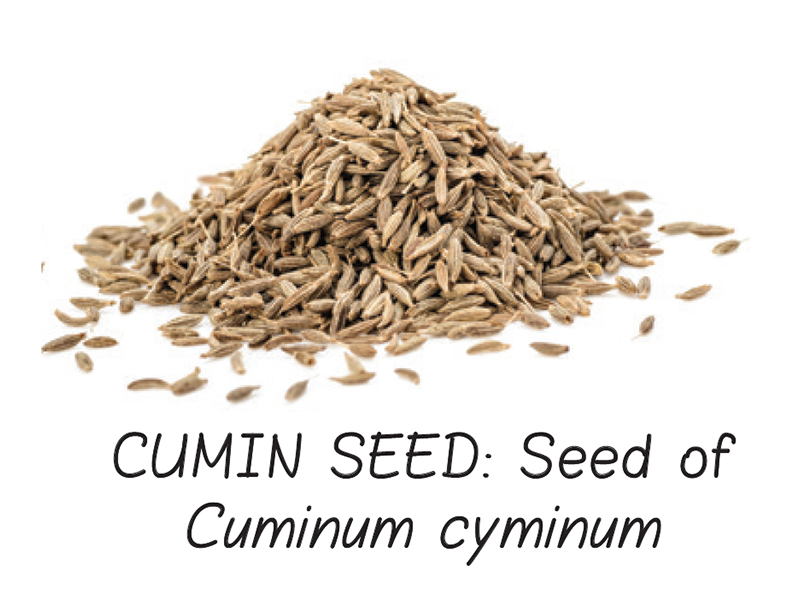 Cumin
Cumin
Along with historical use in Ayurvedic medicine and other ancient medical systems, cumin seed has been demonstrated by modern science to support our health, confirming many of its traditional uses. For one, cumin has digestive stimulant activity, largely due to its ability to stimulate bile secretion and the activity of certain digestive enzymes (such as small intestinal maltase and pancreatic trypsin, amylase, and chymotrypsin); a rat study found that cumin supplementation shortened the transit time of food by 25%. Cumin has also demonstrated antidiabetic effects in both animals and humans, reducing fasting and post-meal blood sugar levels (in humans) and improving diabetes-related metabolic abnormalities like hyperlipidemia (in rats). In addition, rats with high blood pressure, cumin has been shown to improve plasma nitric oxide and reduce systolic blood pressure—suggesting cumin may help improve endothelial function and oxidative stress, giving it a potential role in protecting against heart disease. It’s also been shown to protect against gastrointestinal tumors in rodents, in part by modulating the metabolism of carcinogens.
 Ginger
Ginger
Ginger, too, is a total rockstar when it comes to boosting our health. Along with its famous benefits for treating nausea and other gastrointestinal problems, research has shown that ginger root and its phytonutrients play a protective role against certain cancers (including colorectal cancer, stomach cancer, breast cancer, prostate cancer, and cervical cancer), can promote better memory, helps combat neurodegenerative diseases, may promote cardiovascular health, benefits some respiratory disorders, and could even help protect against diabetes and obesity. (See The Health Benefits of Ginger for a more detailed look at this amazing spice!)
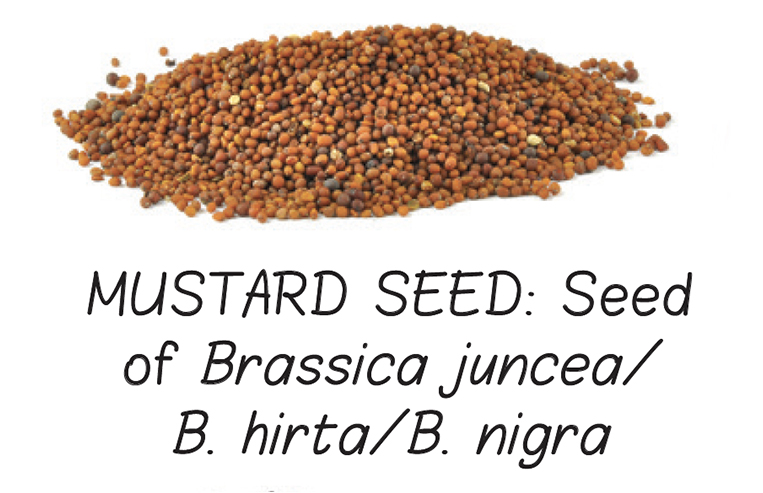 Mustard Seed
Mustard Seed
Mustard seed, along with being the foundation of the popular condiment, has been shown to help lower blood sugar levels (particularly in people with type 2 diabetes), could promote the healing of psoriasis-induced lesions, and (due to its glucosinolate content) may protect against some types of cancer (although more human research is needed!).
Nutmeg
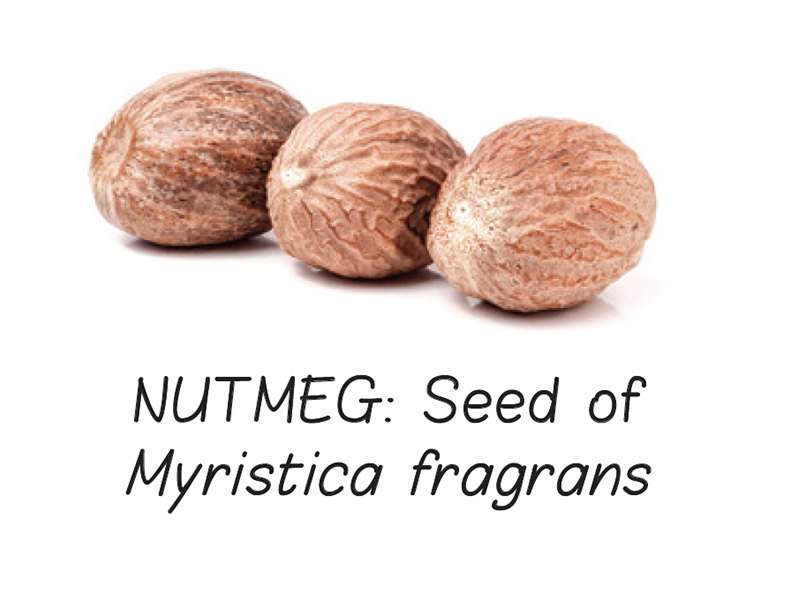 Along with having high antioxidant capacity (mostly due to its eugenol and beta-carophyllene content), nutmeg has immunomodulatory and radio-protective properties (helping prevent radiation-induced DNA damage), can support liver health in animals with liver damage, and alters the activity of carcinogen-metablizing enzymes in the liver (including cytochrome P-450, aryl hydrocarbon hydroxylase, acid soluble sulphhydryl, and glutathione-S-transferase).
Along with having high antioxidant capacity (mostly due to its eugenol and beta-carophyllene content), nutmeg has immunomodulatory and radio-protective properties (helping prevent radiation-induced DNA damage), can support liver health in animals with liver damage, and alters the activity of carcinogen-metablizing enzymes in the liver (including cytochrome P-450, aryl hydrocarbon hydroxylase, acid soluble sulphhydryl, and glutathione-S-transferase).
Pepper
 Pepper (in all its forms!) is also a stand-out spice for our health. The alkaloid capsaicin from chili pepper (which gives it that “hot” quality!) has particularly high antioxidant activity, and in a study of 30 different fruits, herbs, and spices, chili pepper was shown to have the highest anti-inflammatory activity of all. Capsaicin also has a unique role in pain management due to its ability to deplete nerves of substance P, a neuropeptide responsible for pain signaling. As a result, capsaicin has been effectively used for reducing symptoms of osteoarthritis and fibromyalgia. (This same mechanism also causes chili pepper to lose their hotness over time: the pain receptors in our mouths get desensitized!) In addition, there’s some evidence that chili pepper and capsaicin can promote weight loss, with human studies showing it can increase fat burning and reduce appetite (fascinatingly, capsaicin activates TRPV1 channels in the body, causing an increase in levels of intracellular calcium and triggering a sympathetic nervous system response; chili pepper can also directly activate brown adipose tissue and subsequently increase energy expenditure!). See also What Are Nightshades? and The WHYs behind the Autoimmune Protocol: Nightshades
Pepper (in all its forms!) is also a stand-out spice for our health. The alkaloid capsaicin from chili pepper (which gives it that “hot” quality!) has particularly high antioxidant activity, and in a study of 30 different fruits, herbs, and spices, chili pepper was shown to have the highest anti-inflammatory activity of all. Capsaicin also has a unique role in pain management due to its ability to deplete nerves of substance P, a neuropeptide responsible for pain signaling. As a result, capsaicin has been effectively used for reducing symptoms of osteoarthritis and fibromyalgia. (This same mechanism also causes chili pepper to lose their hotness over time: the pain receptors in our mouths get desensitized!) In addition, there’s some evidence that chili pepper and capsaicin can promote weight loss, with human studies showing it can increase fat burning and reduce appetite (fascinatingly, capsaicin activates TRPV1 channels in the body, causing an increase in levels of intracellular calcium and triggering a sympathetic nervous system response; chili pepper can also directly activate brown adipose tissue and subsequently increase energy expenditure!). See also What Are Nightshades? and The WHYs behind the Autoimmune Protocol: Nightshades
 Black pepper, too, has an impressive résumé of science-based benefits: along with having a high antioxidant capacity, black pepper has been shown to have anti-cancer effects (including via cytotoxicity, apoptosis, autophagy, and interfering with signaling pathways) against breast cancer, colon cancer, prostate cancer, and cervical cancer cells, and can help protect against diabetes. It’s also been shown to support a reduction in LDL cholesterol and triglycerides while increasing HDL. And in case that’s not reason enough to use this popular spice, additional research has shown it has pain-relieiving, anticonvulsant, and neuroprotective effects! Many of these benefits of black pepper are due to its phytonutrient composition—particularly piperine, piperic acid, piperlonguminine, pellitorine, piperamide, piperettine, and piperolein B.
Black pepper, too, has an impressive résumé of science-based benefits: along with having a high antioxidant capacity, black pepper has been shown to have anti-cancer effects (including via cytotoxicity, apoptosis, autophagy, and interfering with signaling pathways) against breast cancer, colon cancer, prostate cancer, and cervical cancer cells, and can help protect against diabetes. It’s also been shown to support a reduction in LDL cholesterol and triglycerides while increasing HDL. And in case that’s not reason enough to use this popular spice, additional research has shown it has pain-relieiving, anticonvulsant, and neuroprotective effects! Many of these benefits of black pepper are due to its phytonutrient composition—particularly piperine, piperic acid, piperlonguminine, pellitorine, piperamide, piperettine, and piperolein B.
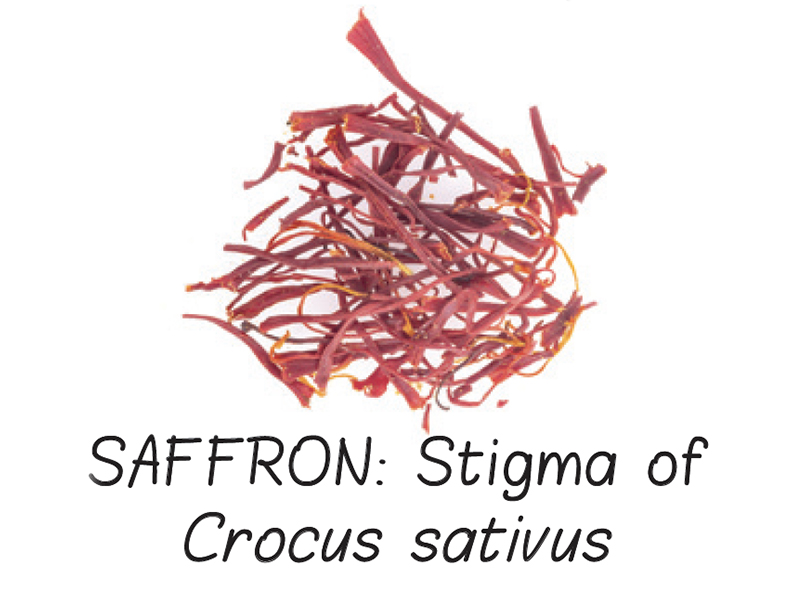 Saffron
Saffron
Saffron and its phytonutrients have shown notable health effects in both experimental and clinical studies—especially when it comes to the nervous system (some of saffron’s bioactive components have been demonstrated to cross the blood-brain barrier, helping explain how it can affect the central nervous system). In particular, saffron (and specifically its phytonutrients safranal, crocin, and picrocrocin) may help enhance learning and memory, have neuroprotective effects, reduce anxiety and depression, and help protect against Alzheimer’s and Parkinson’s disease. Saffron has also been shown to inhibit tumor cell growth in colorectal cancer.
Turmeric
 Turmeric, which is the ingredient that gives curry its bright yellow color, has been the subject of over 3,000 scientific publications just within the last three decades! And when we look at this special spice, it’s easy to see why: turmeric contains over unique 100 components, with the phenol curcumin stealing the spotlight most of all. Along with being a powerful antioxidant, this compound has anti-inflammatory effects that rival those of pharmaceutical NSAIDs, may work as a COX-2 inhibitor, can help improve blood lipid profiles (namely, reducing HDL and triglycerides), has anti-tumor effects, and may even boost brain-derived neurotrophic factor—which may play a role in combatting depression and neurodegenerative diseases. In fact, turmeric is such a wonder-spice that I have a whole article dedicated to it: check out Turmeric: The Full Scoop!
Turmeric, which is the ingredient that gives curry its bright yellow color, has been the subject of over 3,000 scientific publications just within the last three decades! And when we look at this special spice, it’s easy to see why: turmeric contains over unique 100 components, with the phenol curcumin stealing the spotlight most of all. Along with being a powerful antioxidant, this compound has anti-inflammatory effects that rival those of pharmaceutical NSAIDs, may work as a COX-2 inhibitor, can help improve blood lipid profiles (namely, reducing HDL and triglycerides), has anti-tumor effects, and may even boost brain-derived neurotrophic factor—which may play a role in combatting depression and neurodegenerative diseases. In fact, turmeric is such a wonder-spice that I have a whole article dedicated to it: check out Turmeric: The Full Scoop!
Wasabi
 Wasabi, too, is more than just a complement to meals! Research has shown that it may help promote fat loss (particularly its compound 5-Hydroxyferulic acid methyl ester), may help fight certain cancers by inhibiting the formation of acrylamide, a carcinogen that forms under some high-temperature cooking conditions (wasabi and its bioactive components have also been shown to reduce the growth of human pancreatic cancer, breast cancer, colorectal cancer, and oral cancer cells), and even promotes bone health through its compound p-hydroxycinnamic acid.
Wasabi, too, is more than just a complement to meals! Research has shown that it may help promote fat loss (particularly its compound 5-Hydroxyferulic acid methyl ester), may help fight certain cancers by inhibiting the formation of acrylamide, a carcinogen that forms under some high-temperature cooking conditions (wasabi and its bioactive components have also been shown to reduce the growth of human pancreatic cancer, breast cancer, colorectal cancer, and oral cancer cells), and even promotes bone health through its compound p-hydroxycinnamic acid.
Spices are Great for the Gut Microbiome!
Importantly, spices have also demonstrated a range of effects on the gut microbiome, particularly when it comes to reducing the growth of pathogens. See also What Is the Gut Microbiome? And Why Should We Care About It?
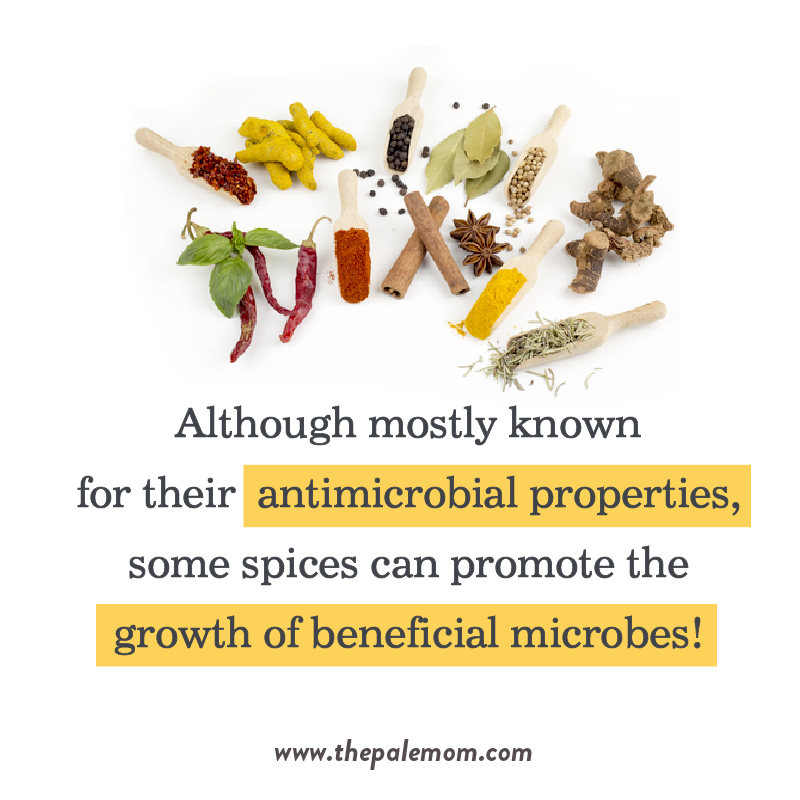 Cinnamon can reduce the growth of the bacteria Salmonella enteritidis, Streptococcus pneumonia, Staphylococcus aureus, Streptococcus pyogenes, E. coli, H. pylori, Klebsiella pneumoniae, Pseudomonas aeruginosa, Clostridium difficile, Clostridium perfringens, and Salmonella typhi, the fungi Candida and Aspergillus, and the parasite Cryptosporidium parvum. Ginger can help prevent viruses from attaching to host cells, inhibit a drug-resistant strain of Pseudomonas aeruginosa from growing, reduce Staphylococcus aureus growth, and even inactivate E. coli 157:H7. Galangal root has also been shown to kill E. coli, Staphylococcus aureus, Bacillus cereus, Pseudomonas auroginosa, and Salmonella in vitro. Cardamom possesses activity against H. pylori, drug-resistant strains of Candida, E. coli, and Staphylococcus. Allspice and clove, due to their eugenol, are active against Shigella sonnei, L. monocytogenes, and Aspergillus. Coriander has an inhibitory effect against Candida albicans, E. coli, Pseudomonas aeruginosa, Salmonella typhi, Klebsiella pneumonia, and Proteus mirabilis.
Cinnamon can reduce the growth of the bacteria Salmonella enteritidis, Streptococcus pneumonia, Staphylococcus aureus, Streptococcus pyogenes, E. coli, H. pylori, Klebsiella pneumoniae, Pseudomonas aeruginosa, Clostridium difficile, Clostridium perfringens, and Salmonella typhi, the fungi Candida and Aspergillus, and the parasite Cryptosporidium parvum. Ginger can help prevent viruses from attaching to host cells, inhibit a drug-resistant strain of Pseudomonas aeruginosa from growing, reduce Staphylococcus aureus growth, and even inactivate E. coli 157:H7. Galangal root has also been shown to kill E. coli, Staphylococcus aureus, Bacillus cereus, Pseudomonas auroginosa, and Salmonella in vitro. Cardamom possesses activity against H. pylori, drug-resistant strains of Candida, E. coli, and Staphylococcus. Allspice and clove, due to their eugenol, are active against Shigella sonnei, L. monocytogenes, and Aspergillus. Coriander has an inhibitory effect against Candida albicans, E. coli, Pseudomonas aeruginosa, Salmonella typhi, Klebsiella pneumonia, and Proteus mirabilis.
Likewise, although mostly known for their antimicrobial properties, some spices can promote the growth of beneficial microbes!
Ginger extract has been shown to increase levels of Bifidobacterium and Enterococcus while also raising levels of short-chain fatty acids (these effects are largely due to the phytonutrient 6-gingerol, the main polyphenol in ginger extract). And, turmeric extract has been shown to survive human gastric and intestine juice and serve as substrate for Lactobacillus rhamosus GG (LGG) and Bifidobacterium animalis BB12, while also fostering the growth of these bacteria several days after turmeric extract supplementation. In a study of rats fed a high-fat, high-carbohydrate diet, wasabi supplementation (relative to the control) prevented the development of hypertension and led to an increase in Allobaculum, Sutterella, Bifidobacterium, and Coriobacteriaceae, suggesting that wasabi not only helps modulate the gut bacteria, but may do so in ways that protect against some chronic disease.
What About Spices on the AIP?
Spices that are derived from seeds, berries and whole fruit are eliminated initially on the Autoimmune Protocol due to high food intolerance rates (see The WHYs behind the Autoimmune Protocol: Nuts and Seeds, Spices on the Autoimmune Protocol and TWV Podcast Episode 450: Spices on the AIP? What’s In, What’s Out, and Why). However, there are compelling reasons to prioritize reintroduction of spices within the Reintroduction Phase of the Autoimmune Protocol, see The 3 Phases of the Autoimmune Protocol and Reintroducing Foods after Following the Autoimmune Protocol.
Spices for the Win!
Spices not only add flavor to our dishes but also pack a phytonutrient punch that can boost numerous health indices. Generally, the fresher and higher quality the spice, the higher the concentration of beneficial phytonutrients, so premium spices are definitely worth it! Check out some of my favorites: Paleo Powder, Pure Indian Foods and the spices from Fresh-Pressed Olive Oil Club.
Citations
Abu-Izneid T, et al. “Nutritional and health beneficial properties of saffron ( Crocus sativus L): a comprehensive review.” Crit Rev Food Sci Nutr. 2020 Dec 17;1-24. doi: 10.1080/10408398.2020.1857682.
Ashokkumar K, et al. “Botany, traditional uses, phytochemistry and biological activities of cardamom [Elettaria cardamomum (L.) Maton] – A critical review.” J Ethnopharmacol. 2020 Jan 10;246:112244. doi: 10.1016/j.jep.2019.112244. Epub 2019 Sep 18.
Guldiken B, et al. “Phytochemicals of herbs and spices: Health versus toxicological effects.” Food Chem Toxicol. 2018 Sep;119:37-49. doi: 10.1016/j.fct.2018.05.050. Epub 2018 May 23.
Lai PK & Roy J. “Antimicrobial and chemopreventive properties of herbs and spices.” Curr Med Chem. 2004 Jun;11(11):1451-60. doi: 10.2174/0929867043365107.
Majdalawieh A, et al. “In vitro investigation of the potential immunomodulatory and anti-cancer activities of black pepper (Piper nigrum) and cardamom (Elettaria cardamomum).” J Med Food. 2010 Apr;13(2):371-81. doi: 10.1089/jmf.2009.1131.
Naeem N, et al. “Nutmeg: A review on uses and biological properties.” International Journal of Chemical and Biochemical Sciences. 2016 Jan;107-110.
Ranasinghe P & Galappaththy P. “Health benefits of Ceylon cinnamon (Cinnamomum zeylanicum): a summary of the current evidence.” Ceylon Med J. 2016 Mar;61(1):1-5. doi: 10.4038/cmj.v61i1.8251.
Sahib NG, et al. “Coriander (Coriandrum sativum L.): a potential source of high-value components for functional foods and nutraceuticals–a review.” Phytother Res. 2013 Oct;27(10):1439-56. doi: 10.1002/ptr.4897. Epub 2012 Dec 19.
Saleh BK, et al. “Medicinal uses and health benefits of chili pepper (Capsicum spp.): a review.” MOJ Food Processing and Technology. 2018 Jul;6(4).
Shahrajabian MH, et al. “Chinese star anise and anise, magic herbs in traditional Chinese medicine and modern pharmaceutical science.” Asian Journal of Medical and Biological Research. 2019;5(3):162-169.
Singletary K. “Cinnamon: Update of Potential Health Benefits.” Nutrition Today 2019. 51(1):42-52.
Smith AH & Mackie R. “Effect of condensed tannins on bacterial diversity and metabolic activity in the rat gastrointestinal tract.” Appl Environ Microbiol. 2004 Feb;70(2):1104-15. doi: 10.1128/aem.70.2.1104-1115.2004.
Srinivasan K, et al. “Cumin (Cuminum cyminum) and black cumin (Nigella sativa) seeds: traditional uses, chemical constituents, and nutraceutical effects.” Food Quality and Safety. 2018 Mar;2(1):1-16.
Takooree H, et al. “A systematic review on black pepper (Piper nigrum L.): from folk uses to pharmacological applications.” Crit Rev Food Sci Nutr. 2019;59(sup1):S210-S243. doi: 10.1080/10408398.2019.1565489. Epub 2019 Feb 11.
Thomaz FS, et al. “The influence of wasabi on the gut microbiota of high-carbohydrate, high-fat diet-induced hypertensive Wistar rats.” Journal of Human Hypertension 2020 May;35(2):170-180 DOI: 10.1038/s41371-020-0359-8
Varghese S, et al. “Chili pepper as a body weight-loss food.” Int J Food Sci Nutr. 2017 Jun;68(4):392-401. doi: 10.1080/09637486.2016.1258044. Epub 2016 Nov 29.
Zhang L & Lokeshwar BL. “Medicinal properties of the Jamaican pepper plant Pimenta dioica and Allspice.” Curr Drug Targets. 2012 Dec;13(14):1900-6. doi: 10.2174/138945012804545641.
Zheng J, et al. “Dietary capsaicin and its anti-obesity potency: from mechanism to clinical implications.” Biosci Rep. 2017 May 11;37(3):BSR20170286. doi: 10.1042/BSR20170286. Print 2017 Jun 30.

